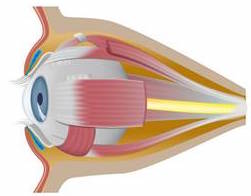WiRED Releases Health Learning Module on Vision
BY ALLISON KOZICHAROW; EDITED BY BERNICE BORN
S
ince healthy eyes are essential to a healthy body, WiRED International now offers a health learning module on vision.
WiRED’s Vision Module describes vision and the visual system, structural and functional eye disorders, eye diseases, brain disorders and injuries affecting eyesight, treatment of visual problems, eye tests and examinations. We stress eye care and provide tips about practices that can help us see better and prevent some eye problems from ever occurring.

Read More

Vision is process that starts in the eyes but actually occurs in the brain. Vision starts when light is absorbed by a tissue in the back of the eye called the retina. This light is changed by the retina into signals that are sent to the brain. The signals travel through many parts of the brain, and the brain is able to understand important things from the signals such as the shape, size, color, and location of the objects we see.
Many diseases can impact different parts of the eye and cause poor vision. Eye diseases do not always cause pain and sometimes can only be detected through a comprehensive eye examination. Most eye diseases can be treated with medications or surgeries.
Globally, the number of people of all ages visually impaired is estimated to be 253 million, of whom 36 million are blind. The major causes of visual impairment are uncorrected refractive errors and cataract. The good news is that more than 80% of all vision impairment can be prevented or cured.
Learn all about vision by checking out WiRED’s Vision Module.

You can download the module in this story, and all 400+ of WiRED’s health modules, through WiRED’s Health Module Access Program (HealthMAP) by clicking here. This easy-to-use free program will enable you to create your own customized collection of health learning modules. You can learn more about HealthMAP through WiRED's animation.
Quiz Questions from WiRED’s Vision Module

Facts about Vision
- Vision is a skill that we use to understand and engage with the world around us.
- Research shows that vision is responsible for 80% of the information that we learn.
- Vision is a learned skill that is developed over a period of years, much like the ability to walk and speak.
- Vision is made up of 17 visual skills such as eye movement control, focusing at far, focusing at near and color perception that together allow us to complete visual tasks such as reading and writing.
- Vision is performed by our visual system, the team of organs — two eyes, 12 eye muscles and the brain — that work together to give us vision.
- Causes of vision impairment include uncorrected refractive errors (53%), cataract (25%), age-related macular degeneration (4%), glaucoma (2%) and diabetic retinopathy (1%).






^ Back to the Top |





